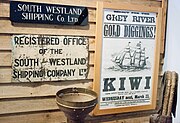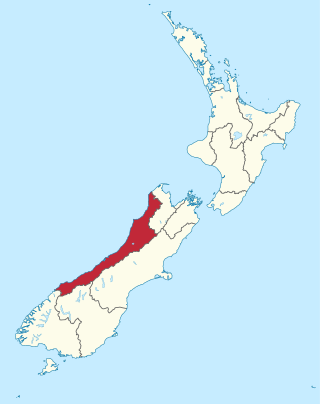
The West Coast is a region of New Zealand on the west coast of the South Island that is administered by the West Coast Regional Council, and is known co-officially as Te Tai Poutini. It comprises the territorial authorities of Buller District, Grey District and Westland District. The principal towns are Westport, Greymouth and Hokitika. The region, one of the more remote areas of the country, is also the most sparsely populated. With a population of just 32,900 people, the West Coast is the least populous region in New Zealand. The population in the region grew by 0.4% over the year to July 2023.

Hokitika is a town in the West Coast region of New Zealand's South Island, 40 kilometres (25 mi) south of Greymouth, and close to the mouth of the Hokitika River. It is the seat and largest town in the Westland District. The town's estimated population is 3,120 as of June 2023.

Ross is a small town located in the Westland District on the West Coast of New Zealand's South Island, 27 kilometres (17 mi) south-west of Hokitika and 46 kilometres (29 mi) north-east of Hari Hari by road.

Franz Josef is a small town in the West Coast region of the South Island of New Zealand. Whataroa is 32 kilometres (20 mi) to the north-east, and the township of Fox Glacier is 23 kilometres (14 mi) to the south-west. The Waiho River runs from the Franz Josef Glacier to the south, through the town, and into the Tasman Sea to the north-west.
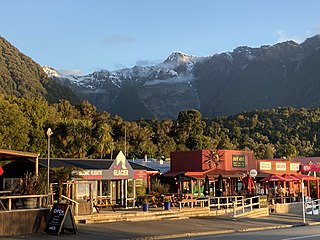
Fox Glacier, called Weheka until the 1940s, is a village on the West Coast of the South Island of New Zealand. The village is close to the eponymous Fox Glacier / Te Moeka o Tuawe.
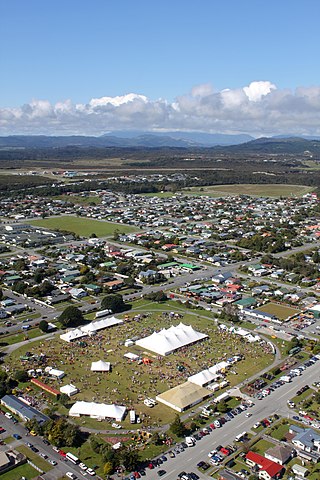
The Hokitika Wildfoods Festival is an annual event held in early March in Hokitika, New Zealand. Its main attraction is an array of unusual foods, including huhu grubs, lamb's testicles, and horse semen.
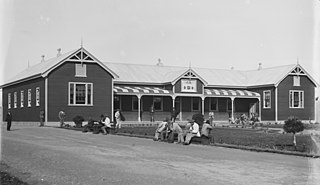
The Seaview Asylum was a psychiatric hospital located to the north of Hokitika, in the West Coast Region of New Zealand's South Island, adjacent to the former Westland Hospital. Open from 1872 to 2009, Seaview trained psychiatric nurses and was once the town's biggest employer.

Westland County, also known as County of Westland, was a local government area on the West Coast of New Zealand's South Island. It existed from 1868 to 1873, and then from 1876 until 1989. In its first incarnation, it constituted the government for the area that was split from the Canterbury Province, with the West Coast Gold Rush having given the impetus for that split. It had the same administrative powers as a provincial council, but the legislative power rested with Parliament in Wellington. The first Westland County was the predecessor to Westland Province.

The Hokitika Clock Tower, initially called the Westland War Memorial and then the Coronation and War Memorial, is a prominent landmark in Hokitika, New Zealand. The memorial was initiated, fundraised for, and carried out by a committee, to commemorate the region's contribution to the Second Boer War; not just the four local men who had died but all 130 who had gone to war in South Africa. An additional purpose was to provide Hokitika with a town clock.

History House Museum is a collection of photographic and archival records and historical objects relating to Grey District on the West Coast of New Zealand. The museum opened in the former Grey County Council Chambers in 1996, but the building was deemed unsafe in the event of an earthquake and forced to close in 2017. A new home for the collection is being sought.
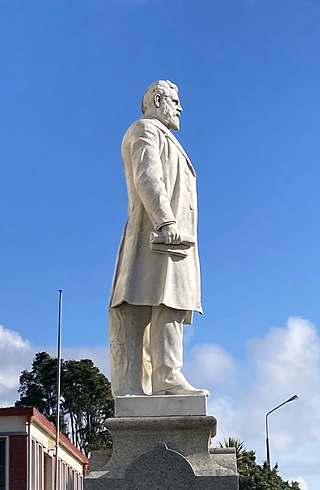
This statue of Richard Seddon is in Hokitika, on the West Coast of the South Island of New Zealand. The statue is situated on Sewell Street, outside the Government Buildings known as Seddon House.

All Saints' Church, also known as Hokitika Anglican Church, is an heritage-listed Anglican church located in Hokitika, on the West Coast of the South Island of New Zealand. The church forms part of the Ross and South Westland parish of the Diocese of Christchurch within the Anglican Church in Aotearoa, New Zealand and Polynesia. The church building is a Category I building on the Heritage New Zealand register.
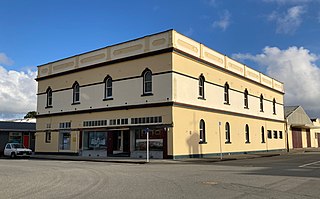
The Renton Hardware building, also known as the Okitiki building, is a commercial building in Hokitika, on the West Coast of New Zealand's South Island. Completed in 1908, the building was designed by architect Arthur Griffin, who was also responsible for the nearby Carnegie library. In 1989, the Renton building was granted historic place category 2 status by Heritage New Zealand.

The Westland District Library is the public library in Hokitika, on the West Coast of New Zealand. Beginning as the Hokitika Literary Society in 1866, it occupied a Carnegie library building from 1908 as the Hokitika Free Public Library, moving out in 1975.

The West Coast Wildlife Centre is a kiwi-rearing facility in Franz Josef, New Zealand. A public-private partnership with the Department of Conservation and Te Rūnunga o Makaawhio of Ngāi Tahu, it hatches eggs of the kiwi species rowi and Haast tokoeka retrieved from the wild. It rears the chicks until they are large enough for transfer to outdoor enclosures as part of Operation Nest Egg. More than 50 per cent of all living rowi were hatched at the Wildlife Centre. It is also a tourist attraction with several captive tuatara, museum displays, and tours of the rearing facility.

The Hokitika Savings Bank building is a former bank building in Hokitika, on the West Coast of New Zealand's South Island. Completed in 1927, the building was granted historic place category 2 status by Heritage New Zealand in 1989.
Elizabeth Mary Hudson was an early nurse in Hokitika on the West Coast of the South Island of New Zealand.
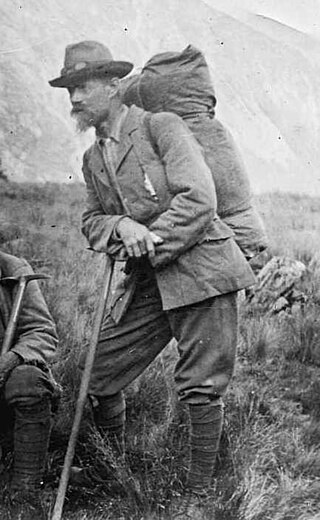
Ebenezer Teichelmann, known as 'the little Doctor' to his friends, was an Australian-born surgeon, mountaineer, explorer, conservationist and photographer in New Zealand. He was a survivor of the sinking of the SS Marquette in 1915. He achieved 26 first ascents of mountains and seven first ascents, or crossings, of passes, cols, or saddles, and is credited with reviving climbing in New Zealand when the sport was almost dead. A keen photographer, he used a full-plate glass camera, which was hauled up many mountains. His photographs were used in books and advertisements, and helped to achieve conservation status for West Coast reserves.

Hokitika Cemetery, also known as Seaview Cemetery, is the cemetery for Hokitika in New Zealand.
Westland Hospital was one of two hospitals in Hokitika, on the West Coast of New Zealand. It was founded in 1865 and closed in 1989.






